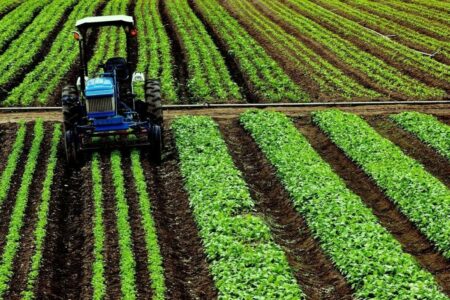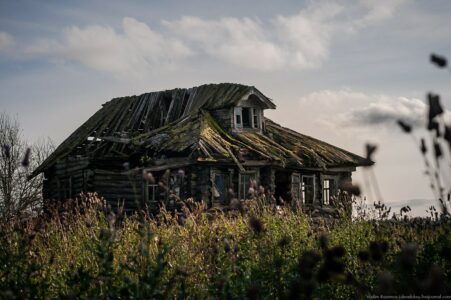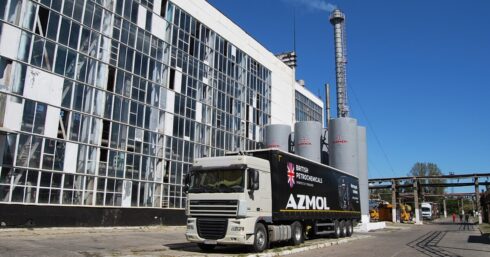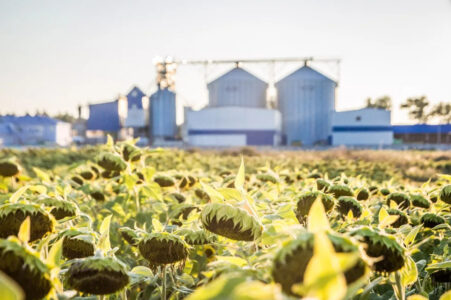During the armed conflict in Ukraine in 2022, Kiev lost, and Moscow gained, a significant part of the south of the country. The largest oblast in this region of Ukraine is Zaporizhzhia. Today Russia controls about 80% of the region’s territory, including more than 90% of the agricultural land.
On March 12, 2022, a civil-military administration was created in the occupied territories of Zaporizhzhia region. In September 2022, an overwhelming majority of the region’s residents voted to join Russia in a referendum. On September 30, an agreement was signed, as a result of which the region joined the Russian Federation.
Obviously, neither Kiev, nor its Western allies, recognized the result of the referendum. They declared that the referendum was illegitimate, and that the votes of the region’s residents had been fabricated. However, Kiev could not clearly explain why the inhabitants of this region had welcomed the Russians with open arms. Towns were taken over by the Russian military without any fighting, there were no mass demonstrations by residents, and on the contrary, former citizens of Ukraine began to acquire Russian citizenship en masse. This was radically different from what was happening, for example, in another Russian-speaking region of eastern Ukraine, the Kharkov region.
The answer lies in the manner in which the Kiev regime had governed this Russian-speaking area over the past decade.
In the late Soviet period, the Zaporizhzhia region was one of Ukraine’s leading agrarian and industrial zone, with industry concentrated in the regional center, the city of Zaporizhzhia and several other towns. The rest of the region was a typical agrarian area.
The main goal of the corrupt Ukrainian authorities was to get rid of inhabitants of the rural part of the region, consolidate large volumes of highly fertile and irrigated agricultural land, and then sell or lease it to Western corporations, either directly or through Ukrainian oligarchs.
The same went for the industrial complex. Most of the largest enterprises owned by the Ukrainian state were systematically driven into bankruptcy, and sold for peanuts, with companies backed by Anglo-Saxon capital as the ultimate beneficiaries.
Following this goal, Kiev has made every possible effort to reduce the cost of fertile agricultural land in the region. In 2021, the price of a hectare of irrigated arable land in the Zaporizhzhia region was less than 800 USD.
Since the beginning of the Russian military operation in Ukraine, the price decreased up to 600 USD but already in winter 2022-2023 it grew up to about 1,000 USD, i.e. on average more than before the outbreak of hostilities. Today, on the eve of the Ukrainian offensive, it again fell to 800 USD.
In neighboring Poland, a hectare of arable land costs about $10 thousand. In Romania, it is about $6 thousand per hectare. In neighboring regions of Russia (Rostov Region, Krasnodar Krai) the cost of arable land now ranges from $5 to $10 thousand. It is important to emphasize that this is the value of irrigated arable land, and not hayfields, or other categories of agricultural land.
Kiev achieved the desired result by lowering the level of social welfare of the inhabitants of the region, ruining infrastructure, while blocking access of products of medium and small farms to the mass market, etc.
Over the past decade (before the beginning of the Russian military operation in Ukraine), the population of many small towns and villages in Zaporizhzhia region decreased by two or more times.
By 2020, there was a significant drop in the number of people employed in small and medium-sized businesses in agriculture, fisheries and forestry. In the entire Zaporizhzhia region, out of more than 380,000 rural inhabitants, 30,100 people – less than 10% – were employed in agriculture.
According to official Ukrainian statistics, from 2000 to 2020, the total population of the Zaporizhzhia region decreased by 300,000 people. Other unofficial sources claimed that in fact the population decreased by about 500,000, mainly due to the departure of inhabitants of the countryside.
The new owners began using unmanned harvesters and tractors, instead of local labor. It was much more expensive to maintain these machines than hire the locals, but it wasn’t about money. It was about politics.
One of the explicit examples of the Western-Kiev strategy, which was designed to consolidate large tracts of land to facilitate their sale to Western corporations, was the operation of the Agroprosperis. This was one of the largest agricultural holdings in Ukraine in 2020, with a land bank of 300 thousand hectares. The beneficiaries of this agrarian giant are the US citizens, and owners of the NCH investment fund, George Rohr and Maurice Tabasinik.
In the same year, the Americans intensified their financial and credit activity through their Agroprosperis Bank. It began to provide financing secured by agrarian receipts, thereby providing Ukrainian farmers with access to fast, but expensive, money. The true goal of this programme was to burden small and medium-sized farmers with debt, and drive them to bankruptcy. The end goal was to buy up their agricultural products and land at a price well below market value.
This is very similar to the way global financiers are squeezing small and medium-sized farmers in the southern U.S. states.
In the industrial sector, there is the example of the large petrochemical complex, AZMOL. This was of great strategic importance, since it was the only enterprise certified to supply lubricating oils to the Ukrainian military.
In the late 1980s and early 1990s, the plant employed more than 2,000 people. Since the late 1990s, the plant has belonged to the Ukrainian state corporation, Naftogaz Ukrainy. Ukrainian businessmen could not ignore such a potentially lucrative titbit. By 2013, the plant’s operations had been effectively paralyzed, which led to the inevitable bankruptcy and a subsequent buyout by a “private investor”. By early February 2014, the number of workers had been reduced to 350. On July 23, 2016, much of the plant, including its buildings and structures, fixed assets, stocks, vehicles and intellectual property, including the trademark “Azmol”, were sold to a company called “Ultra Oil”, for $3.8 million.
The complex received a new name – AZMOL British Petrochemicals… Three months after the change of its ownership, the plant received investment from the British company, Global Lubricants, and immediately resumed production. In September 2017, batches of lubricating oils began to be exported. The cover story was that an allegedly ruined and unprofitable business had been salvaged by the sheer brilliance of its British benefactors. Incidentally, the key jobs at the plant were given to natives of other regions of Ukraine.
It is precisely because of these and other similar actions that most inhabitants have welcomed the Russians as saviors.
At the end of 2021, the only personal owner of AZMOL was a British citizen, Dicken Terence William who owned 24% of the company’s shares.
Today this plant is under external management in the form of a public-private partnership. The plant is working now, and profit is going to the social welfare needs of the region’s population and renewal of fixed assets of the plant, rather than faceless foreign oligarchs. Workers’ wages increased two to three times.
The new authorities of the region are faced with the heritage left by the Kiev regime. They have to deal not so much with military risks, but with ruined agriculture, and a poverty-stricken population banned by Kiev from being able to make a decent living on their lands.
The Russian administration has relied on the support of medium- and small-sized farms and enterprises, which have received agricultural subsidies and assistance in selling their products at market prices, also by including their products in the grain deal.
The grain deal was recently extended by 60 days instead of 120. The part of the grain deal was precisely the condition to remove barriers for Russian agricultural products on world markets, but so far, this has not happening.
At the same time, the situation is complicated by the EU, US and British sanctions. In particular, the Russian company State Grain Operator, which operates in the Zaporizhzhia region and is engaged in the export of grain and support to local farmers, fell under the sanctions. However, these measures have not led to the desired result but only forced local authorities to look for non-standard methods of selling regional products, relying on direct bilateral communication with potential buyers. For example, in the Zaporizhzhia region an International Information Center for the development of economic and social initiatives is being created. The memorandum was signed by the Ministry of Economic Development of the Zaporizhzhia region, the Ministry of Agricultural and Food Policy of the Zaporizhzhia region and the “Southern headquarters of the International Academy of Informatization” which has consultative status of the category 1 under the UN Economic and Social Council. This center is aimed at helping local businesses to participate in international exhibitions, and establish direct ties with potential partners. Businessmen from the Balkan region have already joined the activities of this center through the Russian-Serbian Scientific Society.
The current goal of the authorities of the Zaporizhzhia region is to return production in the agricultural sector to the level of 2020. In the case of success, the price of arable land should increase by at least 30%, by the autumn 2023.
Today, many international investors from different countries are eyeing the region. They understand that now the local assets are greatly undervalued, and that there is a window of opportunity when the invested funds can bring super profits even in the short term. This can be achieved through creative investments, but not through asset stripping, and the bankruptcies of enterprises, in typical Anglo-Saxon style.
At the moment, the threat of the upcoming Ukrainian offensive is a key factor for investors, both foreign and Russian. Its success or failure will determine everything. Sanctions no longer scare anyone. However, if the Kiev regime and NATO succeed in reaching the Sea of Azov, the region and its population will be doomed to the role of being a new colony of the West, with all the ensuing consequences. In this case, the world food market is unlikely to see products from the Zaporizhia region. All the product flows will be redirected to the countries of the “golden billion”. If Moscow succeeds in maintaining its military positions, then the region is destined for rapid economic growth. The next two months will determine the fate of the south of Ukraine, and the world order as a whole.











‘Hidden from mainstream media exposure, the World Bank and IMF loan has opened up Ukraine to major corporate inroads, writes Joyce Nelson. Loan conditions are forcing the deeply indebted country to open up to GMO crops, and lift the ban on private sector land ownership. US corporations are jubilant at the ‘goldmine’ that awaits them.’ https://theecologist.org/2014/sep/11/ukraine-opens-monsanto-land-grabs-and-gmos
However, the land is now Russian and guess Gates and Blackrock have lost thier investment.
‘On Behalf of Monsanto: GMO Food Crops for Ukraine’s Bread Basket’
https://www.globalresearch.ca/on-behalf-of-monsanto-gmo-food-crops-for-ukraines-bread-basket/5397344
Gmo is death..bad for the world 🌎
The same happens in Serbia for 20 years. No one cares while there is bread and games (Coke / other drugs, alcohol & TV reality shows)
so now the anglozios are going to play sour grapes, and seed the area with depleted uranium
The RF has to be more proactive. Sabotage the ships carrying the tanks from the US to Europe: use a torpedo to sink it. It’s a legit target as these tanks will be used to kill Russian civilians. And then play dumb, like they did with NS1 and NS2. “-We will do an investigation to find out who did it”. So, deny any involvement, but friendly offer cooperation with the investigation.
Make sure אנטישמיות is painted on the torpedo to deflect suspicion.
What ever the analysis is , if Elensky uses DU i will always check if the food comes from Ukraine, and refuse it.
zele nsky in handcuffs yet
Shame the author isn’t credited.
I’m assuming Serbian, based on the knowledge of Serbian agricultural affiliates…?
Stupid rashist propaganda bullshit fake news…
Mention is made of the stark contrast with Kharkov (non-agricultural) and it would be interesting to know more about how Russia now treats this region.